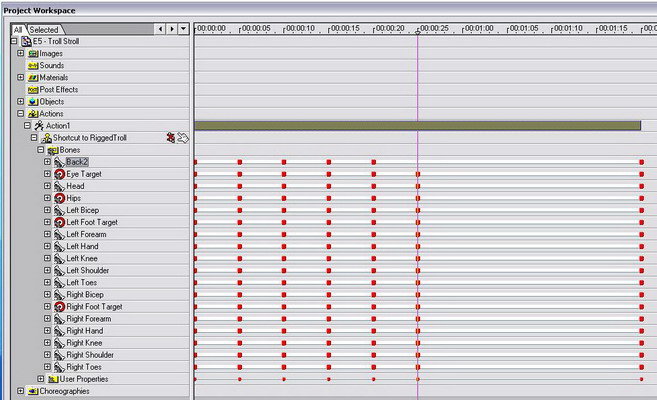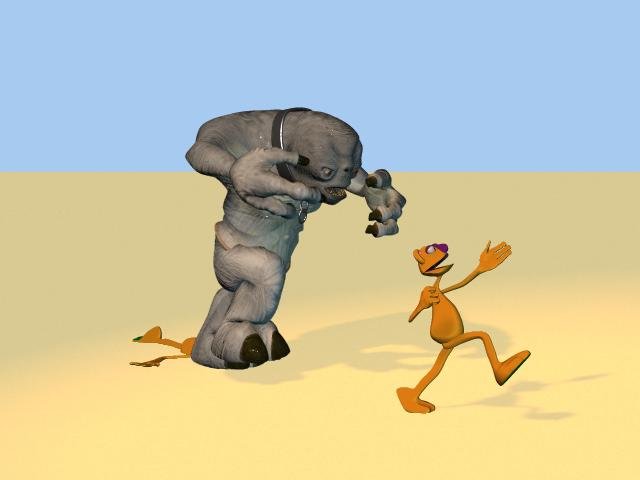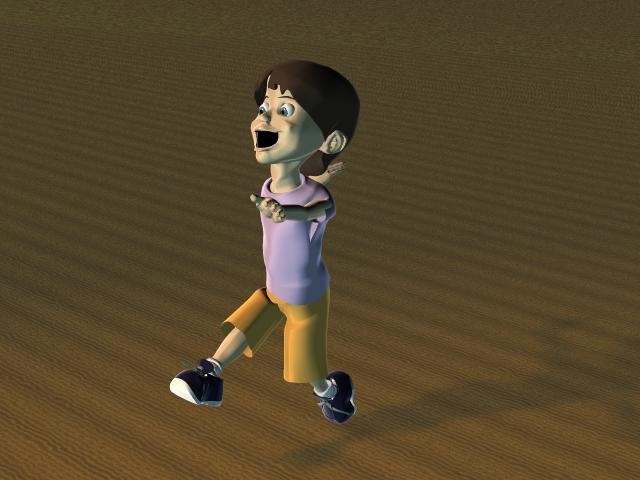
Gaijin
-
Posts
174 -
Joined
-
Last visited
Content Type
Profiles
Forums
Events
Posts posted by Gaijin
-
-
-
I don't think it was Will Sutton involved with this.
William Hennes, according to the other message thread.
-
There's a big difference between "free" and "public domain". Using the Creative Commons licenses allows you to distribute your work for free, while still retaining certain copyrights. For instance, there is a version of the CCL which effectively states "you can do anything you want with my __XX__, as long as you give me credit". There's another version which effectively states "you can use my __XX__ as long as you give me credit and don't modify it".
The Creative Commons licenses allow you to pick & choose amongst various options on how you want your works to be used. Declaring something Public Domain is different, in that you are giving up all of your rights to the object in question. Someone can take a public domain object, repackage it, and distribute it for profit while calling it their own.
I think most of the contributors to the A:M Exchange would want credit acknowledgement at the very least - something the CCL was designed to do.
-
Instead of reinventing the wheel, use one of the Creative Commons licenses. There are enough "flavors" to fit whatever the group decides upon for usage rights.
-
Ah, the joys of being a solo animator - you end up having to learn more than you could possibly want about nearly everything.

Animating musicians is difficult because "finger-synching" music is the direct equivalent to lip-synching speech.
-
It would add a lot of "pow" if you did some detail work on the fret hand of both musicians - doing so would make it feel more like a real jam session. Here's some examples to help:
-
For some odd reason the board isn't letting me send messages direct.
Here's a little inspirational reference for your rat guitarist ...
-
We're starting to delve into biometrics - here's a couple of "starter sites" which deal in gait analysis:
Introduction to the study of human walking
-
The 10% overlap you mention is not clear to me and I don't think I know about this. Can you elaborate?
Human walk cycles are usually broken down into several distinct phases, with the top-level division being between when a foot is in contact with the ground and supporting weight, and when a foot is in the air and progressing to the next contact point. We'll label these
Stand (or Support) = foot in contact with ground
Stride (or Swing) = foot in the air, progressing to next contact.
In the process of one complete cycle, each leg progresses from Stand to Stride to Stand and does so in an alternating manner between left and right. All basic stuff - nothing new here.
The overlap I was referring to was the point when a leg switches from Stride to Stand, and the heel of the foot makes contact with the ground. At this point the other leg hasn't yet transitioned from Stand to Stride, so you have a section of each half-cycle where both legs are in Stand and neither leg is in Stride. This segment serves to transfer support weight from one side to the other and comprises approximately 10% to 12% of the overall cycle (if memory serves me correctly). The measurement of respective heel strikes gives you the length of the gait.
Once the foot contacts the ground on a "normal surface" - we'll ignore ice-covered lakes, sandy beaches, and other slippery or unstable walking surfaces - it does not "slide" along the ground relative to the bottom plane of the foot. Weight transference cause the Stand leg to "rock" from heel-contact to toe-pushoff in progression, but the overall foot position relative to its landing point does not change. Any amount of "slipage" in the foot's "grounded" position which isn't explained by the walking surface or overall circumstances is immediately recognizable and is what gives an animated character that unrealistic "video game glide" appearance.
In addition, the human walk is distinctly non-linear in its forward velocity, although inertia of the torso mass tends to dampen the variations to a degree. A:M's cyclic action was designed around repeatable movement with a CLV (constant linear velocity) along the path axis, and determines the current and any interpolated path position by using the primary model bone as a reference point. Since a walk cycle's reference really needs to be the Stand contact point and any interpolation should be performed using NLV motions defined by keyframes, this makes it very dificult - at least for me - to construct a decent walk cycle using the cyclic action.
-
Something many people miss is when the forward foot's heel hits the ground, there is no ease -- like the old bouncing ball it doesn't stop or slow down at all until it hits the ground.
Another thing easily missed is that there's a 10% overlap between stride (foot in the air) and stand (foot touching the ground) - and that once a foot is in stand it doesn't move off the spot. This is especially difficult to do using the cyclic action in A:M.
-
Gaijin, did you get this fixed or is it still not working?
Still not working, but I also haven't had a chance to get back to it yet.
-
check that all the spine bones in the model are centered at x=0 at both start and end point.
Went back and did that - still doesn't copy Back2
I'm obviously missing something here ....
-
Okay - I'm getting frustrated.
I'm using Tim the Troll (surprise, surprise) for the E5 Walk cycle lesson, and I'm at the point of copy/paste mirror keyframing. However, the rotations to the Back2 bone are simply not being copied by the paste mirror keyframe command, no matter how many different ways I've tried to do it.
Procedure used:
1) Select Key Model
2) Set frame to 0:00
3) Force keyframe
4) Copy Keyframe
5) Set frame to 0:25
6) Paste Mirrored
7) Note that Back2 wasn't copied in mirror at 0:25
8) Snarl in frustration
9) Grab copy of TAoA:M and throw it against the far wall
10) repeat 1 through 9

-
I was referring to people who own AM but aren't doing anything constructive with it. Why have it then? Any time contributed to SO is welcome.
Well, because some of us who are "idling" are trying to guilt-trip ourselves into doing something we're "wasting" money on
. In my case it's finally working, but I also had to reassess exactly what I wanted to accomplish with A:M in the first place. And all of the money I've spent up to this date and "wasted" could be marked down as my contribution in supporting a small business I believe in. So, why am I not involved in SO? Time, effort, and because the world doesn't interest me in the slightest. The majority of my creative energies are currently employed in work, home, and the performance dancing myself and my wife do in our "copious spare time" (HAH!). What little I have left over is being directed at a project I've been toying with for quite some time now - and I've finally kicked myself in the rear hard enough to actually start the dralm-darned thing (two virtual pennies to the first one to attribute that reference). While I freely acknowledge that working on SO could be a wonderful learning experience, it would be difficult for me to become enthusiastic enough to expend sufficient effort for it to be worthwhile to either party.
Note that I'm not making any value judgement on whether or not the TWO and SO projects are worthwhile ... well, really I am, because I think they are very worthy projects ... it's just that I have no interest in trying to create anything in that universe, as it doesn't hold any attraction for me personally.
(Buying a reasonably-priced copy of the finished result is another thing entirely - both to support the overall effort and for the general entertainment value itself. I don't have to want to create in the genre to enjoy watching a potentially good flick ...)
-
Episode 4 - Don't quit your day job ...
Animating Tim the Troll is an interesting challenge - I'll get better next time ...
-
-
Heh. I wasn't able to take the time and fix the left Shaggy's blend between dance and wave because the big lug in the middle got tired of doing so many takes ...
-
Episode 2 of Gaijin's slow decent into Animation Insanity ....
... presenting the Can Can Can't ....
-
Oy!
Considering the number of years I've been lurking in & out of the background of this community, it's high time I kicked myself in the rear and actually try to get something done for once. (In other words ... start over from the top one more time

Since I'm not involved in the SO project, you'll have to make do with the Scarecrow's alter ego for this exercise, so here's the little scamp himself doing his best "We're Off ..." impression.
-
A note on the Passports issue ...
This year passports are required for cross-border air travel. Next year they will also be required for *any* cross-border travel. Yuck.
-
Just a quick question on the scripting - what ever happened to Nene? You have Priss, minus hardsuit, roaming about on her motorcycle and on foot, and you have Priss's hardsuit in the middle of the action at the same time Priss (sans suit) is fighting elsewhere. I understand this is an adaptation, but for those of us who know the source material - both the 2040 version and the original 2032 OAVs - the discrepancy is rather glaring.

P.S. Did you ever finish the hi-res version?
-
That looks .... really nice. I do have to wonder, however, why a hexapod would be using a barely-modified quadruped walk cycle instead of one designed to maximize the advantages of the hexapodal physiology. There is a sound reason why insects in real life are nearly always moving 3 legs at a time when they transit - they're always supported by a tripod and never have to be concerned with overbalancing.
step 1 - move right front, right rear, and left middle
step 2 - move left front, left rear, and right middle
This gives you alternating tripod support on every step, and to me would be the "natural" walk cycle of any hexapod. What I could see happening with your critter is to have it use the 3/3 walk cycle for anything up to a very fast scurry, and then transition into a modified gallop to give that "hop-leap-pounce" effect at the very end.
And yes, I have read entirely too much science fiction in my life.

-
thanks for the input. I really slapped the spin kick move together because I didnt have any real reference to work off of. It needs a lot of work. I will take you suggestions and see if i can apply them.
Combat Kick Techniques, by David Mitchell, Copyright 1996 Leopard Books, ISBN 0-7529-0214-8
It's a good reference - has *lots* of pictures to use as keyframe reference ...
-
Here's a quick preview of a 12-mat shoji-screened room I was playing around with over the holidays. This will be a part of a larger temple building and I built this sample room to test render times and material effects. The material effects are in no way complete, but I liked the look of this quick pic when I was checking the transluciency settings on the shoji screens.
[attachmentid=12858]













sound again
in Sound Editing, Scoring and Audio Effects
Posted
Ummm - not to nark at you, but if you had bothered to follow the links to the suggested editors, you would have discovered that Audacity is freeware.